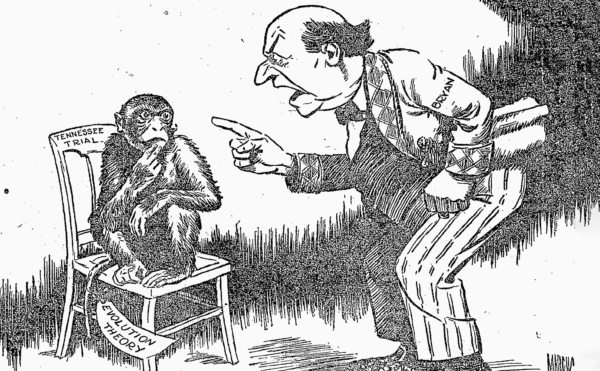The debut of the female birth control pill in 1960 was revolutionary. The combination of progesterone and estrogen allowed women to control their reproductive lives much more easily and effectively. But the pill had many unpleasant and even dangerous side effects. In fact, some doctors argue that it wouldn’t win government approval today. So why haven’t scientists tried to create a birth control pill for men? It turns out they have. In the 1950s scientists created a really good one. But it had one problem—you can’t drink alcohol when you take it.
Credits
Host: Sam Kean
Senior Producer: Mariel Carr
Producer: Rigoberto Hernandez
Audio Engineer: Jonathan Pfeffer
Music:
- Jean-Claude Risset – Mutations
- Peter B – The Growling Dog Hit
- Perry & Kingsley – Cosmic Ballad
- Charlie Hoistman – Ptpar supercollider
- Régis Renouard Larivière – Contrée
- Raymond Scott – Lightworks
- Deerhoof – Despareceré
- Juk Suk Reet Meate – B3 (excerpt from Solo 1978/79)
- Ben Vida – Ssseeeeiiiiii
- Marmots – Sheath and Knife
- Tim Walters – play supercollider
- Eva-Maria Houben – quatuor iv
- Young Marble Giants – Zebra Trucks
- All other music composed by Jonathan Pfeffer
Photo: Wellcome Collection
Transcript
The experiments, frankly, were failing.
It was the 1950s, in New York state. Some biochemists there were studying parasitic worms, some of the nastiest critters on earth—the bane of people, pets, and livestock worldwide. So the biochemists started testing an anti-worm drug in mice. The drug’s technical name was WIN-18446.
Unfortunately, WIN-18446 flopped at killing worms. It just wasn’t effective. To their disappointment, the scientists realized the experiment was a bust.
Or was it? As often happens in research, the scientists noticed something else. A little quirk that ended up being even more intriguing than their original goal.
The quirk was this. In between getting injected with drugs, lab mice back then were free to live their lives and do mouse-y things: nibble cheese, groom themselves, burrow, and also have sex. And of course, biology being biology, some lab mice would inevitably get pregnant.
But the thing was, none of the mice taking WIN-18446 got knocked up. This was unusual, so the researchers looked a bit closer at the females. The females seemed normal, so the scientists switched focus to the males. And here came the surprise. The male mice taking WIN-18446 had stopped producing sperm. They were normal and healthy in every other way, but their sperm counts had plummeted.
Curious, the scientists took the mice off the drug, just to see what happened. To their amazement, the sperm counts shot right back up. And here’s where the goal of their research swerved.
Remember, this was the 1950s, before the female birth-control pill had come onto the market. Beyond condoms, or irreversible measures like vasectomies, humans didn’t really have birth control then. But WIN-18446 suddenly offered a dynamite new approach—a chemical contraceptive. WIN-18446 could be the male pill.
And it might have been—if not for a prisoner out in Oregon, an illegal bottle of hooch, and one hell of a hangover.
From the Science History Institute this is Sam Kean and the Disappearing Spoon—a topsy-turvy science-y history podcast. Where footnotes become the real story.
The fact that WIN-18446 stopped sperm production in mice didn’t necessarily mean that it would do the same in human beings. The scientists had to test this.
So, for reasons that remain obscure, these New York biochemists hooked up with some scientists out in Oregon for human trials. Specifically, the Oregon scientists began testing WIN on a few dozen prisoners in the state penitentiary near Salem.
Now, scientists wouldn’t run such tests on prisoners nowadays. Prisoners are a vulnerable population, and the risk of abuse or coercion is considered too high.
But in the 1950s, such research was common, and in fact offered several advantages. Prisoners were easy to keep track of, and they lived in a controlled environment, without the variability that can bollix real-world studies. Many prisoners were also eager to help, out of boredom if nothing else. Some also saw a chance to pay back society a bit by helping to screen potentially important drugs.
And there was a medical risk for the prisoners here. It’s always nerve-wracking to give an experimental drug to humans for the first time. Will their livers shut down? Will they get brain inflammation, or go blind? The human body is so complicated, you just never know.
But the WIN-18446 pills seemed utterly benign. The prisoners popped them for months, and they suffered no ill effects. They might as well have been popping M&Ms.
Even better, the drug stopped sperm production cold. In just twelve weeks, every single man’s sperm count had plunged. Equally important, when the scientists withdrew the drug, their sperm counts shot back up to normal.
As we now know, the science behind WIN-18446 was pretty straightforward. Inside our bodies, we all have an enzyme called ALDH. ALDH takes the vitamin A in food and converts it into a related compound called retinoic acid.
In men, retinoic acid helps sperm cells form. Specifically, it takes immature, preliminary sperm cells in the testes and helps them grow and change into mature sperm cells that can fertilize an egg. Without retinoic acid, mature sperm cells simply won’t form.
Now, on a molecular level, WIN-18446 happens to be the right shape to lock onto the ALDH enzyme. This gums the enzyme up and prevents it from making retinoic acid. So as long as men are taking WIN-18446, their bodies can’t make retinoic acid, and mature sperm cells can’t form, either.
In contrast, once men stop taking the drug, the ALDH enzyme no longer gets gummed up. Their bodies start making retinoic acid again, and sperm production shoots back up to normal.
Overall, it really seemed as simple as that. On WIN-18446, men were shooting blanks. Off it, they were normal. It was a completely effective, completely benign, completely reversible male contraceptive.
Of course, things are never so simple.
Like many stories that have been passed down a lot, there are different versions out there of what happened next. Some versions hold that the scientists running the prison study didn’t notice the problem until the drug tests shifted to the general population, outside the prison. But the most common, and dramatic, version of the story says that the problem popped up right there in the penitentiary.
Apparently, one of the prisoners taking the drug had some connections outside, and he managed to score some primo contraband—either a bottle of Jack Daniels or a bottle of Chivas Regal scotch.
Regardless, the prisoner smuggled it back to his cell one night. And as soon as the guards snapped the lights off, he slipped out his bottle, settled onto his cot, and settled in to get a little goofy.
Except that’s not what happened. Instead of getting drunk, he got sick. He started sweating, and his heart began fluttering. His temples felt crushed in a vise, and he got so nauseous that he threw up. He seemingly skipped right over the tipsy stage and went straight into a brutal hangover.
What happened inside his body was this. Remember that WIN-18446 gums up an enzyme called ALDH.
Well, it turns out that our bodies have several different kinds of ALDH, each with a slightly different architecture. As we’ve heard, one form of ALDH is active in the testes and helps produce sperm. But another form is active in the liver, and this version of ALDH interacts with booze.
Wine, beer, liquor, and other booze all contain ethanol, which is the molecule that actually gets you tipsy. But the liver metabolizes ethanol into another compound called acetaldehyde. And because acetaldehyde is toxic, the ALDH enzyme sweeps in and converts it into something else, something nontoxic. It’s a bit roundabout, but ALDH does prevent acetaldehyde from building up and poisoning us.
Unfortunately, the WIN-18446 drug gums up both versions of the ALDH enzyme—both the version that helps sperm production and the version that helps metabolize booze. As a result, if you take WIN-18446 and then drink alcohol, toxic acetaldehyde will start to accumulate in your body. That’s why the prisoner felt nauseous after some slugs of whiskey. He was being poisoned, and could have died if he’d kept drinking.
In fact, some modern forms of alcohol-abuse treatment involve giving people a drug that has the same effect as WIN-18446, in gumming up the ALDH enzyme. People who drink after taking it feel so sick that booze loses all appeal.
Now, to his credit, the prisoner with the bottle of whiskey fessed up and reported his night of hell to the scientists running the study. But to their discredit, the scientists didn’t believe him.
One scientist accused him of drinking a bottle of cleaning fluid by mistake. Others insisted they’d already screened for all possible side effects in mice, so the prisoner had to be wrong.
But of course, mice don’t drink alcohol. And as soon as the prisoner showed them the whiskey bottle, the scientists passed straight through the denial and anger stages and plunged right into grief. Because they realized, instantly, that WIN-18446 was doomed as a contraceptive.
Now you might be asking yourself, what’s the big deal? Why can’t men still take WIN-18446 and just promise to lay off the sauce?
Well, as one cynic put it, If people couldn’t drink, then they wouldn’t need contraceptives. But the real answer is that male contraceptives are somewhat unusual in medicine. And to understand why they’re unusual, it helps to compare them to female contraceptives.
Through the 1950s, men generally took responsibility for contraceptives, usually condoms. But the debut of the female pill in 1960 changed everything. Since that time, the responsibility for contraceptives has shifted onto women, and many feminist critics have complained, not unfairly, about this burden.
It’s especially burdensome because many female contraceptives have unpleasant side effects. High blood pressure, mood swings, vaginal bleeding, even strokes. Some doctors, in fact, have argued that if the first female pill from 1960 was introduced today, it would never win government approval. The side effects were that harsh.
So why does the government approve these contraceptives, despite the side effects and potential health risks? Well, because the alternative is pregnancy—and pregnancy itself is a health risk.
That is, being pregnant carries certain dangers with it, up to and including death from complications during childbirth. And when you’re weighing whether to approve a female contraceptive, you have to take the dangers of pregnancy into account.
For example, taking the female pill increases a woman’s risk of developing deadly blood clots. But pregnancy increases the risk of deadly blood clots by ten times more. So in that case, the pill’s side effects are worth the risk.
For men, the calculus is different. Men don’t get pregnant, and therefore don’t suffer the health complications of pregnancy. So according to the cost-benefit analysis, male contraceptives aren’t really allowed to have side effects. Even a tiny increased risk of, say, blood clots or strokes will doom a male contraceptive—as did the harsh, potentially fatal interaction with booze.
Now, that double standard might or might not sound reasonable to you, but that’s the reality. Male contraceptives cannot have side effects. And that’s why WIN-18446 was doomed as soon as that prisoner took his first sip of whiskey.
Of course, WIN-18446 isn’t the only possible compound out there that might work as a male contraceptive. Some scientists have tried drugs that artificially lower testosterone levels, which also causes sperm production to plummet. Other researchers have tried cancer drugs.
One thing that cancer drugs do is kill cells that divide rapidly. This slows down fast-growing tumors, which rely on cell division to grow bigger. Incidentally, the cells in hair follicles also divide quickly. That’s why cancer drugs often cause people to go bald. Because as a side effect of stopping tumor cells from dividing, the drugs inadvertently stop hair-follicle cells from dividing as well. And without that support, hairs detach and fall out.
But sperm cells are perhaps the fasting-dividing cells in the body. Men produce up to a thousand sperms every second. So slowing down sperm production is often a side effect of cancer drugs.
And the thing is, these drugs don’t have to be perfect. Reproductive biologists say that you simply have to drop sperm counts to “only” a million sperm per milliliter of semen. Which, I have to say, sounds like an awful lot of sperm! But dropping it to merely a million per milliliter will actually prevent 99 percent of pregnancies.
Unfortunately, no drug tested so far has come close to succeeding. Sometimes side effects pop up, killing all hope. The drugs that lower testosterone, for instance, led to acne, weight gain, and mood changes—not to mention impotence, which kind of defeats the purpose of a contraceptive. Or if you think about it, is maybe the perfect contraceptive.
Anyway, the drugs fail for other reasons, too. Sometimes the drugs work in maybe 50 percent of men. Now, for other drugs, a 50 percent success rate would be miraculous. If you found a drug that could cure even a quarter of Alzheimer’s patients, you’d better start looking into flights to Sweden, because you’re going to win the Nobel Prize.
But in contraceptives, a 50 percent failure rate would be a catastrophe. In fact, that’s another reason why male contraceptives are so elusive and so frustrating. They have to work virtually 100 percent of the time, in all people.
Still, despite these difficulties, the search continues, because there’s clearly a need for more contraception. Even today, roughly half of all pregnancies are unplanned. And by some projections, the world’s population could reach 11 billion people by the year 2100.
There’s a sad joke among reproductive biologists that the male pill is only five years away—and has been for the past sixty years. Maybe that cynicism will be disproven tomorrow with a big breakthrough. I hope so. But I’m not holding my breath.
And it wouldn’t be so agonizing if we hadn’t gotten so close that first time. WIN-18446 was perfect. It was safe, it was cheap, it was effective, well-tolerated, and reversible. It just had that one tiny flaw, a nasty interaction with booze. As a near miss, it was tantalizing, it was tormenting. It was almost enough to drive you to drink.
This is the Disappearing Spoon podcast, brought to you by the Science History Institute. Find out more about their library, museum, and multimedia magazine at sciencehistory.org.
Make sure you check out the Science History Institute’s other awesome podcast, Distillations. You can find their in-depth narrative stories and interviews about everything from Space Junk to Sex, Drugs, and Migraines anywhere you get your podcasts, and on their website: Distillations.org.
You can find more incredible stories from my books at samkean.com. You can also book me as a speaker at your school or event.
If you like this podcast, please support it at patreon.com/disappearingspoon. It costs as little as seven cents per day. You can also get bonus episodes and signed books.
Please spread the word to others as well, and subscribe in iTunes, Stitcher, or other places.
This episode was written by me–Sam Kean. It was mixed by Jonathan Pfeffer, and produced by Mariel Carr and Rigoberto Hernandez.
Thanks for listening…




